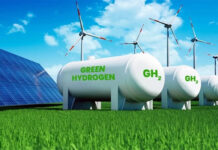Maybe one has gone ahead and started driving an electric vehicle, making use of the products that are powered by solar energy, or perhaps one happens to be a passenger on a plane that is powered partially by sustainable aviation fuel.
These kinds of technologies helping you to live and travel in a less carbon-intensive way are crucial, and on a larger scale, they are instances of the innovations required to help communities as well as businesses achieve decarbonization in a swiftly warming world.
2023 was the hottest year on record, and forecasted global wildfire carbon emissions surged by 30% that year as compared to 2022, as per the EU’s Copernicus Climate Change Service. With record-setting temperatures as well as more frequent severe weather events affecting communities, more growth needs to be made by businesses along with governments so as to speed up the adoption of sustainable technologies that can go on to help decarbonize carbon-intensive operations.
The good news happens to be that there are sustainable solutions within the market that can be adopted as well as implemented today. Hydrogen as a source of fuel is one of the technologies right at the forefront of innovation in the renewable energy gamut, and with technologies aiding the capture and storage of carbon dioxide as well as the production of hydrogen from renewable fuels, respectively, they are building the foundation of a hydrogen economy that is indeed flourishing.
Government entities go on to recognize hydrogen usage as a necessary enabler when it comes to the energy transition. At the COP28 summit recently, over 30 countries, such as the United States, formally went on to recognize the importance of clean hydrogen when it comes to decarbonization and meeting the global energy requirements.
Here is what to know when it comes to the future hydrogen economy: what is required to get there, and why does it really matter?
The Present State of Hydrogen
In today’s times, hydrogen happens to be used as a feedstock when it comes to chemical processes and gets manufactured at refineries as well as in petrochemical complexes. Apparently, to a lesser extent, it is used as fuel.
There are varied ways to produce hydrogen, and the processes are often categorized by way of colors. Grey hydrogen happens to be produced from fossil fuels such as natural gas or coal, and as well as producing it goes on to release carbon dioxide into the atmosphere. Blue hydrogen also gets produced by way of using fossil fuels; however, the CO2 it releases is captured as well as stored or sequestered, all thanks to carbon capture, storage, along with the utilization technologies, such as solutions that Honeywell teams have gone on to develop. Green hydrogen is made by way of using renewable energy sources. Its production process does not give out CO2 within the atmosphere.
Blue and green hydrogen both happen to play a critical role within the energy transition, with blue hydrogen building demand for lower-carbon hydrogen along with facilitating the infrastructure as well as systems required to enable the ecosystem of future hydrogen.
Especially for organizations having industrial operations within the hard-to-abate industries, think facilities along with refineries as well as petrochemical complexes; decreasing dependence on fossil fuels is the key when it comes to meeting net-zero goals, and hydrogen goes on to hold promise as a solution within these environments.
Visioning a Hydrogen Economy
One may have heard of the circular economy. It happens to be a framework that looks out to make the most of resources by way of reducing consumption, recycling as well as reusing materials, and then continuing that process.
Apparently, in a similar vein, the hydrogen economy happens to be an innovation driver and pathway that goes on to support the larger goal of decarbonizing industries. When it comes to the future hydrogen economy, green hydrogen happens to be an accessible choice to fossil fuels, with infrastructure in place so as to support its production, distribution, as well as utilization.
To get there, companies such as Honeywell happen to be working on various pathways so as to produce blue as well as green hydrogen, as well as the infrastructure required to support the processes. This also goes on to include transportation, how hydrogen will move through one plant to another facility- storage, infrastructure, and industrial equipment which can go on to make use of hydrogen in place of natural gas. Engineers from Honeywell have gone on to develop solutions to these challenges, like technology that can go ahead and ship and also store liquid hydrogen by way of using existing infrastructure, which is a major consideration as hydrogen progresses to be a major part of the energy mix.
So, what can be the future hydrogen economy look like for you? Green hydrogen can be made use of in a variety of applications as well as industries that power aspects when it comes to daily life, like offering energy storage for power grids, heating buildings, and also powering vehicles, trucks, and various forms of air transport. For instance, at Honeywell, they are building the next gen of hydrogen fuel cells as well as fuel-storage technologies as a cleaner power source when it comes to drones.
The Hydrogen Future Is Not Far Off
One of the exciting parts about the renewable energy sector happens to be that many of the solutions are tangible. Technologies enabling carbon capture as well as lower carbon hydrogen production are indeed available today. Honeywell’s carbon capture tech goes on to capture as much CO2 as 248 million trees per year.1 These are not at all far-off innovations, but rather they are projects that organizations can take on now so as to start reducing their carbon footprints at costs that are reasonable and at the same time simplifying their processes. They encourage business leaders so as to look at sustainable technology adoption not just as a mere decision but also as a strategic investment in what can soon go on to become a necessity.
REFERENCES-
1 Honeywell CO2 technology helps its customers annually capture an amount that’s comparable to the carbon sequestered by 248,026,290 tree seedlings grown for 10 years according to the EPA GHG equivalency estimator.









































